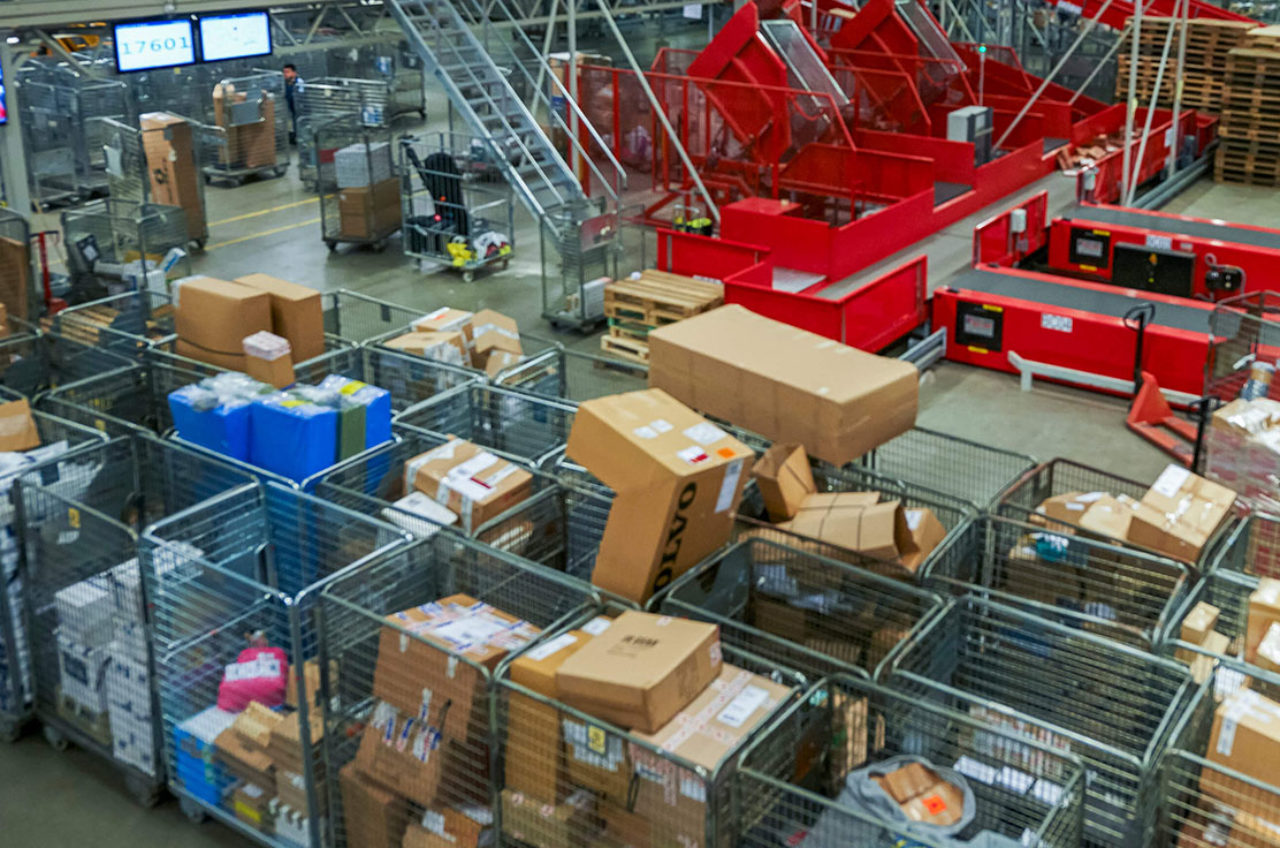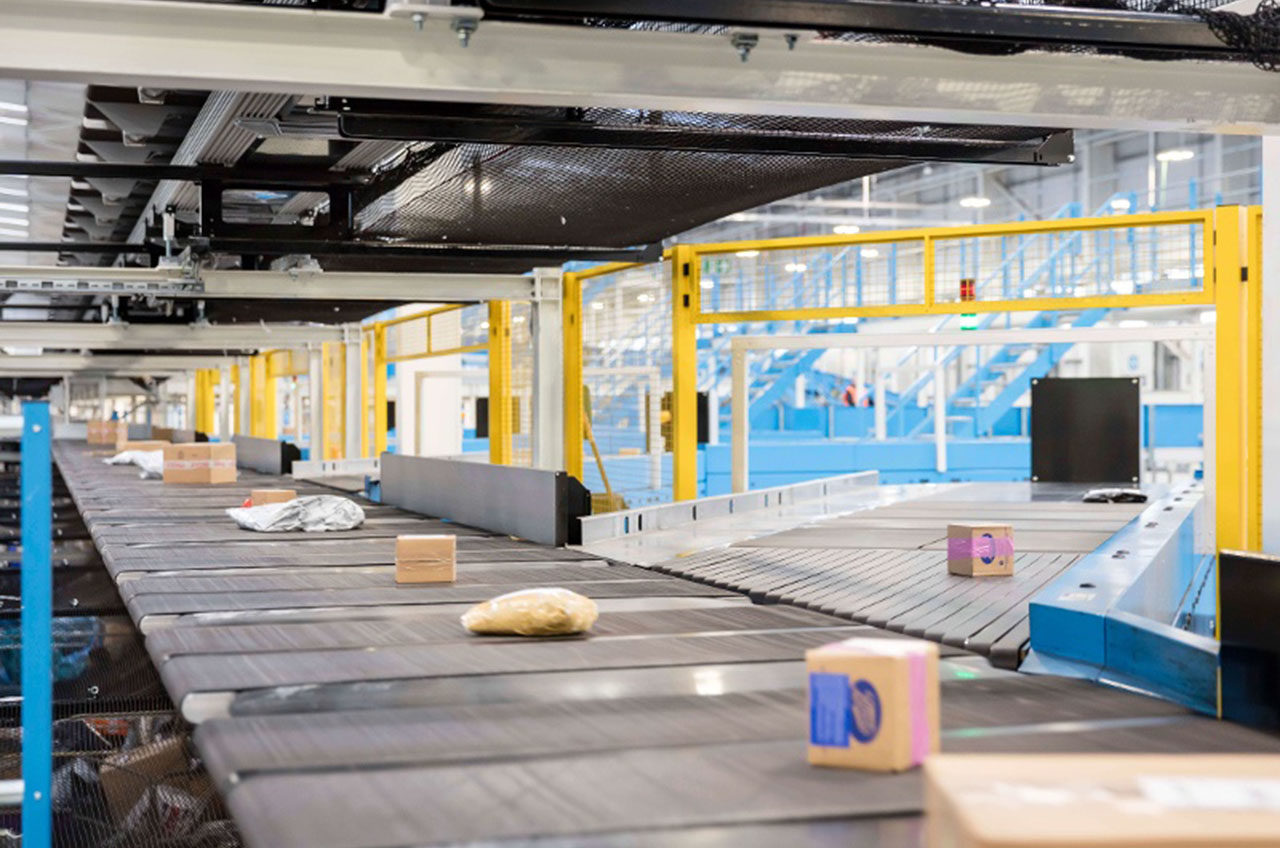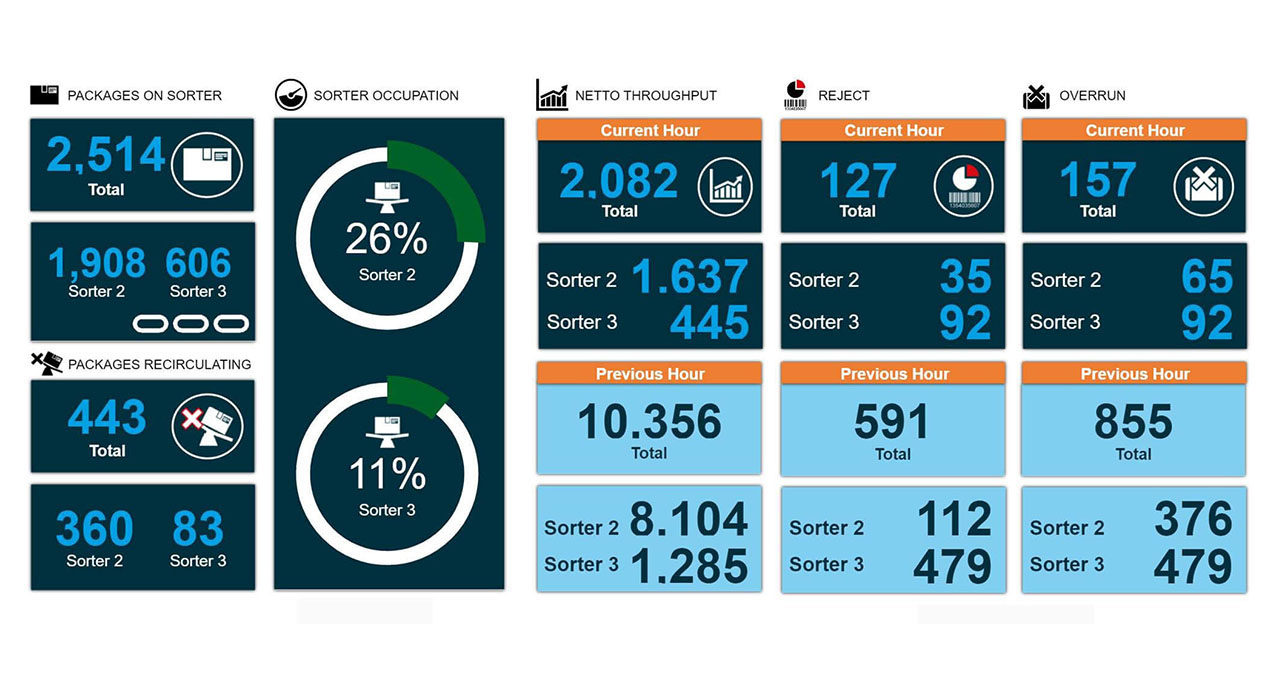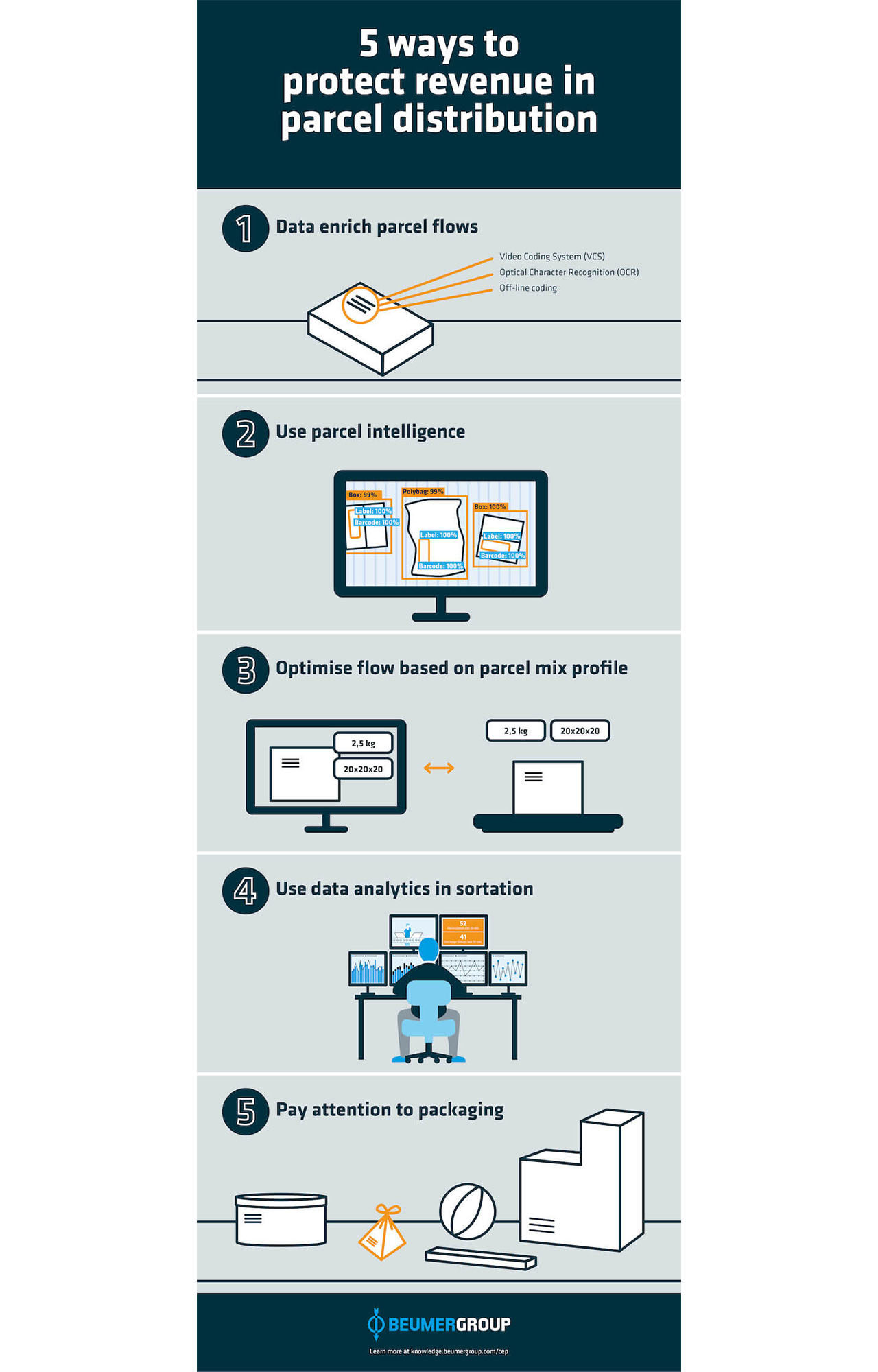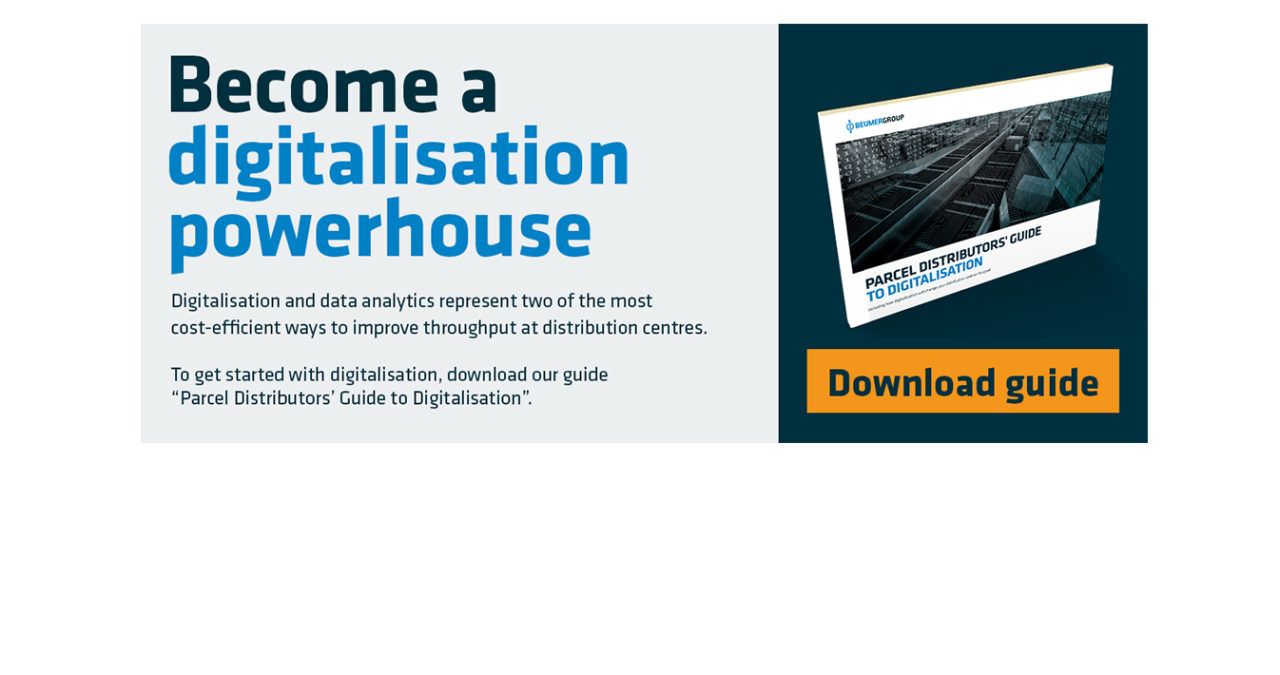Where distribution centres lose revenue
There are many ways insufficient parcel data becomes a money-losing problem for distribution centres, and some examples are:
- The barcode is readable, but the structure of the data contained in the barcode is not compliant.
- The barcode is readable, but doesn’t contain data for further processing.
- The parcel’s profile data (its type, size, weight, sticker, danger, odd shape) is unable to be registered.
- The parcel label doesn’t provide adequate information as to whether it is express or economy freight.
- The parcel “disappears” in the system, arriving at the next terminal as an unexpected “ghost item”.
- The parcel is odd-shaped or irregular and not able to be handled by a conventional sortation system.
Insufficient parcel data and poor packaging is costly to the hub: time and resources is spent on resolving these issues; accounts cannot be settled if handling processes are not recorded; and services are then provided for free. Even if a hub adopts a “no data, no delivery” approach, that too is a loss of potential revenue.
But there are ways in which distribution centres can protect their bottom lines. Here are five of them.
1. Data enrich parcel flows
One of the best ways distribution centres can prevent revenue loss is by making sure they have basic parcel information or data enriching – enhancing and improving data – their parcel flows. By applying these intelligent offline coding technologies, operators can get the necessary data into their systems:
- Video Coding System (VCS): Video coding technology captures images of parcels from different angles which are presented to an operator on a computer screen, allowing the operator to analyse the parcel remotely and supplement the data.
- Optical Character Recognition (OCR): OCR technology similarly captures images of parcels, but the system analyses the details of the parcel label through letter and word recognition, rather than the operator.
- Off-line coding: Through its intelligent software, an automated sortation system can sort parcels using light-coded destinations, so that for no-read parcels, only postal codes need to be entered before they can be sorted to the next stop terminal. This type of off-line coding can be applied to parcels en route to their next destinations, to include further information such as exact destinations (street name, house number), which can be uploaded to the sortation controls system before they reach the next automated sortation terminal.
2. Use parcel intelligence
The use of parcel intelligence and machine learning technology to inspect and categorise parcels is another effective way that CEP operators can safeguard their revenue earning. Parcel intelligence uses image analytics software and machine learning technology to identify parcel characteristics and to categorise and register by exception handling features and/or sort logic features. Areas for improvement using parcel intelligence could be:
- Non-conveyables
- Multiple items on the carrier or conveyor position
- Barcoded items with no-read results
- Image based tracking of items
- Damaged or fragile parcels
- Item types (such as cardboard boxes, polybags, parcel bags and flats)
- Label recognition
Parcel intelligence lets the system decide the category of a parcel, instead of a human. It is a smart and effective way to register unmeasurable parcels, without slowing down or reducing inbound capacities. Parcel intelligence works with any camera technology and can be installed anywhere and on any type of sortation equipment.















